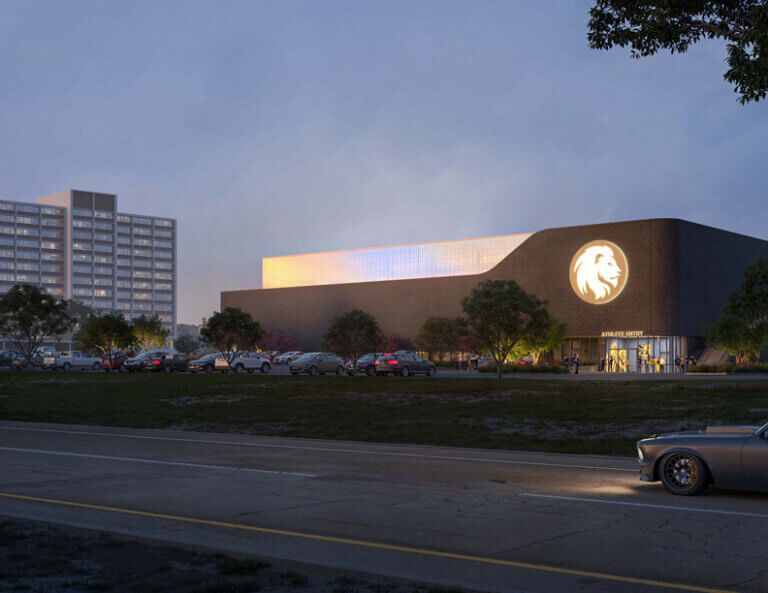
This article originally appeared on Facility Executive.
The higher education construction sector is struggling to rebound in this economy, due to price hikes and supply chain shortages.
By Chris Potter:
Real estate pros are dealing with a once-in-a-generation period of turbulence and uncertainty in the higher education construction sector. From major timeline delays, significant price hikes, and supply chain shortages, the list of challenges threatening to derail these projects seems endless.
There are strategies that can help, however. It’s not feasible to anticipate and prepare for every potential scenario that arises, but having a laser focus on the controllable factors is paramount. By leaning into time-tested pre-construction strategies, decision-makers and builders will be able to ensure projects deliver on time and stay within budget regardless of market volatility.
Here are three key methods that are helping drive home success on higher education job sites across the country:
1. UTILIZE BIM AND ITS LONG-TERM BENEFITS WITH HIGHER EDUCATION CONSTRUCTION
Contractors should take advantage of the benefits of BIM technology to better navigate the challenges that arise with higher education projects. An example of the edge BIM provides can be seen in the construction of a new lecture hall for Samford University’s Brock School of Business, which was needed to keep up with the school’s burgeoning student population. During pre-construction, Hoar discovered that the overall project was $3 million over budget and the school needed to present the project to the Board of Trustees in less than a week. By using BIM to scour through every nook and cranny of the virtual model, Hoar and Samford were able to cut costs by over 20%. Ultimately, the project was presented to the board on time. Sometimes project timelines don’t align well with a school’s academic calendar.
2. SECURE MATERIALS EARLY TO AVOID PRICE HIKES
To better navigate new obstacles sparked by market ebbs and flows, meet with engineers and builders at the onset of a project so team members can vet and evaluate design documents. This will provide clarity on specific materials that will be needed along with ample leeway for any adjustments that may occur so team members can lock in prices and accelerate the delivery of materials. During the construction of Moody Coliseum for Abilene Christian University, the construction team identified long steel lead times and the rising cost of steel as a potential threat to the budget and project schedule. Traditionally, the structural engineer would complete structural design documents, send them to the structural steel trade partner to detail, and then order the steel. The construction team developed a different strategy to engage both the engineer and steel trade partners to develop detailed design documents in real time, accelerating the procurement and delivery of steel by six weeks while saving the client over $400,000.
3. DON’T HESITATE TO ENGAGE WITH TRADE PARTNERS EARLY
Universities and colleges have stricter project timelines and budgets that are set in stone years in advance, with most of these target milestones rotating around the school’s academic calendar. Early collaboration amongst trade partners, design teams and strong team communication are key to creating a realistic plan for the flow of work and minimizing the chances of project delays. Construction teams only had 11 weeks to complete a full HVAC renovation of Aston Hall, a residential dorm at Texas A&M University. During the design phase, the superintendent and mechanical/plumbing trade partner helped lead a full study of the project and design pull plan session. This allowed both the design and construction teams to develop an achievable schedule and sequence of work before arriving at the GMP (guaranteed maximum price), providing a reliable budget and schedule for the client before work began. These practices boosted confidence among all partners and the clients, building trust and ensuring success for the project.
Adaptability has become a highly coveted skill within the construction world as general contractors are forced to improvise and rework plans on projects spanning all sectors. Higher education projects present a unique set of challenges that are tacked on top of the universal issues all job sites are facing. The new dorm must be completed in time for students to move in for the fall semester. The science lab renovations need to be completed before classes resume. Creating an efficient work plan during the pre-construction phase is the blueprint for reducing uncertainty in higher education projects. By following these principles, general contractors will have the inside track on delivering top-notch facilities to clients that are more likely to do repeat business compared to other sectors, creating a win-win for all parties both now and in the future.

